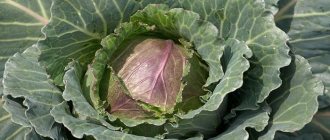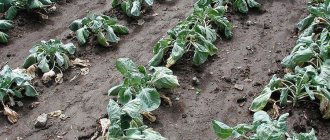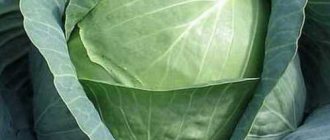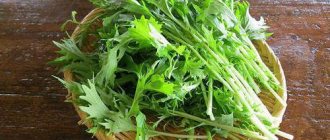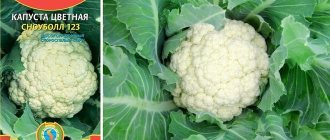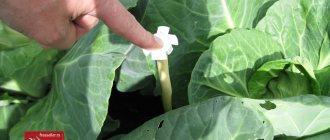Chinese cabbage was common in Asian countries until the 70s of the last century. Now, after the breeding of early ripening and productive hybrids, its cultivation is experiencing an unprecedented rise. Beijing is actively grown, both on an industrial scale and in personal gardens. This unpretentious plant grows well and quickly. Considering the characteristics of the crop, you can get two harvests per season. It is important to know the small secrets and problems of the vegetable, and keep them in mind when planting and growing.
- 2 What kind of soil does Chinese cabbage like?
- 3 Planting dates
3.1 Video: about the timing of planting Chinese cabbage
- 7.1 Video: planting Chinese cabbage seedlings in open ground
- 8.1 Video: autumn sowing of Chinese cabbage in a greenhouse
- 9.1 Video: growing Chinese cabbage from a stalk on a windowsill
Features of Chinese cabbage and the main methods of sowing it
Chinese cabbage, like other members of the cabbage family, is a long-day plant. This means that for fruiting (seed ripening) the crop needs daylight hours longer than 13 hours. If its duration is 12 hours or less, then the plant will not concentrate on reproduction, but the growth of leaves and ovaries will be active.
If, when growing Chinese cabbage, all work is carried out according to the rules, then the harvest will be early and rich.
Since Chinese cabbage is primarily grown for its leaves and heads, this feature of the crop should be taken into account when choosing a method of growing and sowing. There are two main ways to grow Pekinka:
- seeds;
- seedlings.
Note! Not everyone knows that if you buy a head of Chinese cabbage in a store, you can not only eat it, but also grow a new plant from it.
Seeds, seedlings and cabbage stalks can be planted both in open ground and in protected ground. Let's look at all the methods and rules for sowing crops, talk about their features and advantages.
Collection and storage of vegetables
When planted in spring, cabbage will ripen by early summer. In summer - in September. At the time of ripening, the head of cabbage has light yellow-green leaves, collected into a loose, elongated head of cabbage. The weight of cabbage varieties should reach 300 grams. Mature leafy cabbage should have 7-9 leaves. Hybrid varieties are harvested when frost occurs. There is no need to be afraid that the cabbage will freeze: after thawing, it does not lose either its marketability or taste. This feature makes it possible to harvest even in November. The first summer harvest is usually not stored for long, and autumn fruits remain marketable for 3-4 weeks. Cabbage should be stored in a dark room with air humidity above 70%.
Note!
Cabbage cannot be stored together with apples. The latter release a substance that causes cabbage leaves to wilt.
When stored in the refrigerator or on the balcony, cabbage can last up to 4 months.
What kind of soil does Chinese cabbage like?
When preparing the soil for growing vegetables, you need to take into account the following preferences:
- neutral soil acidity. Therefore, when digging up a plot in the autumn, you need to lime the soil and add dolomite flour or fluff lime to it;
- good breathability and looseness;
- fertility. When preparing the soil for each square. meter you need to add a bucket of humus. It is recommended to add wood ash immediately before planting.
Important! Fertilizers to feed the plant must be applied before planting. Chinese cabbage has the ability to accumulate nitrates, so the use of mineral fertilizers for its cultivation is not recommended.
The introduction of humus significantly improves the quality of the soil cover on the site
If we talk about the type of soil, the most suitable for growing Pekinka is loam. When choosing a site, be sure to take into account the height of the groundwater. If there is too much moisture, the roots of the plant may rot. In addition, the soil under the influence of moisture will become intensely supercooled or overheated, which is very undesirable for the crop.
Loose soil is used to grow seedlings. Preference can be given to coconut substrate, in which selected and healthy Chinese cabbage seedlings grow. It is advisable to mix the substrate with humus in a 2:1 ratio. To improve the nutritional value of the mixture and its liming, add a glass of ash to the bucket of soil mixture.
The composition of the coconut substrate includes dried and crushed remains of the surface of the coconut, which give the mixture looseness, breathability, and have a drainage effect
Note! Comfortable soil can be obtained by mixing turf soil with peat (1:1). The mixture will be loose and nutritious.
Landing dates
To obtain high-quality greens and heads of Chinese cabbage, you need a short daylight hours, so the best time to plant the crop is early spring (second decade of April) and the last months of summer. Sowing the crop at the specified time will help to avoid the main problem - bolting of the plant.
Chinese cabbage is a fast-ripening vegetable, but it also has varieties with early (40–55 days), medium (55–60 days) and late (60–80 days) ripening periods. When determining the time of planting a crop, it is necessary to take into account the characteristics of the selected variety: early varieties are preferable for spring sowing, and late varieties are preferable for autumn sowing.
Helpful information! New varieties of Chinese cabbage of Dutch selection are resistant to bolting.
To get an early harvest, you need to opt for the seedling growing method. Seeds for seedlings are planted 25–30 days before the possible date of planting the plant in open ground or a greenhouse, that is, in mid-March for early heads of cabbage or after June 15 for autumn harvest in open ground. For subsequent planting of seedlings in a greenhouse, sowing seeds for seedlings can be organized even earlier - in mid-February, so that the seedlings can be planted in the ground in the second half of March.
With the seedless growing method, the first sowing of seeds can be carried out in well-warmed soil. For the middle zone, this is the end of April or the beginning of May, and the second sowing is organized from the 20th of July to the 10th of August.
Video: about the timing of planting Chinese cabbage
Reviews
Mikhail, Stary Oskol
I trick my Beijing dog so that she doesn’t shoot. I sow the seeds in peat tablets at the beginning of April (from 5 to 10). When the shoots appear, I close them with cardboard boxes after 18-00. After transplanting into the greenhouse, I repeat the closing procedure, covering the ridges with black spunbond.
Nadezhda, Leningrad region
The summer was hot, we had to save the cabbage from flea beetles. I sprayed it with a vigorous solution of black and red pepper. For adhesion I added liquid soap. I won’t say that the effect was 100%, but most of the fleas stuck.
Natalya, Moscow region
Last season I planted a Monaco hybrid. He showed himself excellent. There was no bolting, the heads of cabbage were elastic, large, weighing up to 2 kg. Planted in spring and second half of summer. Both harvests were excellent. The hybrid has 100% germination rate.
Preparation of seed material
Chinese cabbage seeds do not require special pre-sowing treatment. They can be planted directly into the ground. If you are unsure of the quality of the seeds, you can check them for germination. To do this, the seeds are placed between layers of moistened cloth and gauze and placed in a warm place. If the seed is of high quality, then within 3–4 days sprouts will begin to appear. Such seeds can be immediately planted in prepared containers.
Note! If necessary, antifungal preventive treatment of seeds can be carried out. To do this, they are kept in hot water for 15 minutes (+48–50 degrees), and then placed in cold water for 2 minutes. Seeds treated in this way should be dried before planting.
When using self-collected seeds, they should be carefully sorted and sorted.
Sowing seeds in the ground
Spring sowing of seeds directly into the ground can be done in the southern regions. In the average climatic zone, favorable weather for sowing will not arrive until May, and with this period the growing season will fall into long daylight hours, and it will be difficult to avoid bolting of the plant. If a seedless cultivation method is possible, preferably narrow ridges are prepared and seeds are planted in them in the following ways:
- Tape-line, in which wide distances are provided between the tapes (about 50 cm) and narrower ones between the lines (about 30 cm). Sowing of seeds is carried out densely, as thinning will be carried out in the future.
- Group planting in holes, which are made at a distance of 25–30 cm from each other. Place 2-3 seeds in each hole.
Before sowing, it is recommended to mix Chinese cabbage seeds with sand and moisten the soil in the furrows.
It is recommended to bury peking seeds no more than 2 cm. After filling the seeds with soil, the ridges should be pollinated with wood ash. This is an effective way to protect future seedlings from the cruciferous flea beetle. Shoots will appear 4–7 days after sowing.
Recent Entries
Lilac perennials that are beautiful, compact and do not crowd out other plants Why when buying seedlings you should not take the sellers’ word for it and how to determine the age of the plant using 3 signs Tomato seedlings have turned purple or whitish: why the color has changed and how to save the plants
As soon as 1–2 true leaves form on them, the first thinning is carried out. When choosing the strip-line growing method, first leave about 10 cm between the plants, and when closing, carry out a second thinning and leave the plants at a distance of 25–30 cm from each other. When planting in holes, immediately after the true leaves appear, one seedling is left in each hole, and the rest are plucked out.
You need to thin out the sprouts after the second leaf grows, removing the weakest plants from the group
Planting seedlings in open ground
Chinese cabbage seedlings can be planted in open ground at the age of 3 weeks, provided that by this time the seedlings have at least 5 true leaves. It is recommended to harden off the seedlings before planting. About a week before planting, they begin to take it out into the fresh air: first for several hours, gradually increasing the stay time. 2–3 days before planting, stop watering the seedlings and water the plants only at the time of transplanting into the ground.
For seedlings, prepare holes at a distance of 25–30 cm from each other, fertilize them with humus and ash, and moisten them. If necessary, the seedlings are carefully removed from the planting container and placed in the hole so that all the leaves are above the surface of the ground.
Chinese cabbage seedlings are very tender and fragile, so they should be planted carefully
After planting, it is advisable to cover the seedlings with film or spunbond in order to:
- protect seedlings from lower night temperatures;
- shade from the sun;
- protect the roots from excess moisture during the rainy season;
- protect seedlings from pests.
Covering the bed with film or agrofibre will provide additional protection for seedlings from pests and weather disasters
Video: planting Chinese cabbage seedlings in open ground
Diseases
Due to improper watering regime, cabbage suffers from fungal diseases. Most often the crop suffers from blackleg, clubroot, powdery mildew and bacteriosis. They fight diseases with folk remedies or industrial fungicides.
Plants affected by black ring spot or mosaic cannot be treated. To prevent the spread of the virus, diseased specimens are pulled out, taken out of the greenhouse and destroyed.
Features of planting cabbage in protected soil
A vegetable will feel great in a greenhouse if you can create a comfortable temperature for it (no higher than +20 degrees) and humidity (around 70–80%). The process of planting seeds or seedlings of Pekinka in a greenhouse does not differ from the process of planting in open ground. The only difference is the landing time, which we discussed above.
Note! Planting Chinese cabbage in protected ground will allow you to harvest the vegetable several weeks earlier than in open ground.
Video: autumn sowing of Chinese cabbage in a greenhouse
Productivity
Chinese cabbage is an early ripening and high-yielding plant. By observing agrotechnological requirements, it is possible to harvest 600–1000 kg of healthy vegetables from 1 hundred square meters of greenhouse beds. This figure may be lower if you choose the wrong variety and improper care.
Unlike other types of cabbage, the Beijing variety matures in only 45–60 days. Thanks to this early ripening, it is possible to harvest 3 harvests of healthy vegetables in the greenhouse. Peking cabbage is especially popular and therefore expensive in early spring.
How to plant Chinese cabbage from a stalk
Beijing cabbage is so life-loving that it can please you with a harvest even from its stalk. Moreover, the technology for obtaining such a harvest is very simple. To plant the stalk you need to prepare:
- a deep container that will fit the bottom of a head of Chinese cabbage;
- nutritious, loose soil. This can be a mixture of turf soil with peat or sand in equal proportions;
- a pot for planting, which will be slightly larger in size than the bottom of the head of cabbage;
- dark package;
- sharp knife;
- the head of Chinese cabbage itself.
The bottom of almost any dense head of Chinese cabbage is suitable for growing green leaf mass.
Note! The selected head of cabbage should not show signs of disease: spots, specks and other symptoms of future decay.
The planting process consists of the following steps:
- Separate the bottom of the head of cabbage. The cut piece must be at least 6 cm. This is the starting material for growing greenery and the future head of cabbage.
- Fill the container with water and place the lower part of the stalk in it.
Only the bottom of the stalk should be immersed in water
- Place the vessel in a cool room. High temperatures will inhibit the growth of the stalk. The best place for it is a north-facing window sill or a closed balcony, if it maintains above-zero temperatures.
Literally in a day or two, roots will appear at the bottom of the bottom, followed by green leaves. They can be picked almost immediately and eaten.
Important! A planted stalk quickly produces a flower arrow. It must be removed. If you allow it to develop, the greens will become coarse and tasteless.
To grow greens, the stalk can be left in a container with water. If you want to grow a head of cabbage, then the bottom with the emerging roots is transplanted into a container with soil. This is done carefully, since the roots of Chinese cabbage are tender and brittle. Therefore, the stalk with roots is first placed in a container, and then sprinkled with earth so that only the roots are covered with the soil mixture, and the entire upper part of the stalk is above the ground.
About a week later, after a sufficient number of roots have appeared, the stalk can be planted in the prepared soil mixture
Note! When growing in a pot, it is not always possible to achieve good results. A greater percentage of guarantee of obtaining a head of cabbage is provided by transplanting the stalk into open ground.
The planted plant is not watered for some time and watering is resumed after it begins to produce new green leaves. A growing stalk can have its daylight hours artificially shortened. To do this, it is recommended to cover the plant with a dark bag for 12–13 hours a day.
Important! Provided there is a short daylight hours and the temperature regime is observed (no higher than +18 degrees), after 40–45 days you can get a head of Chinese cabbage. Most likely it will not be very dense, but its weight can reach 1 kg.
You can also plant Chinese cabbage from the stalk to obtain seeds. To do this, the flower shoot that the plant produces is not broken off, but allowed to ripen. After some time, you will be able to collect the seeds and use them for planting in your garden.
The seeds can be allowed to ripen and then sown in open ground or a greenhouse
Video: growing Chinese cabbage from a stalk on a windowsill
Popular varieties
Peking cabbage, like any other variety, is subject to all sorts of diseases and parasites. To get a good harvest, it is important to know how to deal with them. For example, when controlling weeds, the use of herbicide is prohibited. Weeds are removed manually or using small equipment.
Common pests that attack Chinese cabbage are:
- Cruciferous flea beetle.
- Slugs.
- Aphid.
- Cruciferous bug.
- Cabbage butterfly.
For preventive purposes, as well as to minimize the chance of the plant being attacked by pests, it is necessary to promptly destroy weeds in the garden bed and do not forget to loosen the soil.
Chinese cabbage is affected by bacterial, fungal and viral diseases. The main diseases are black leg, clubroot, dry rot (or, as it is also called, fomoz), tracheomycosis, mosaic, white rot and downy mildew.
Not only the leafy part of the plant is susceptible to diseases, but also the root part. To minimize infection, it is important to adhere to the rules of agricultural technology and carry out preventive measures.
As a rule, if the rules of agricultural technology are followed and the plant is properly cared for, diseases and pests practically do not affect the plant. Prevention is the most reliable way to protect yourself. Seedlings need to be planted in the ground as early as possible, while maintaining the correct distance, adhere to the rules for harvesting and storing the crop, and also dig up the soil well after harvesting. But if pests appear on the site or the plant becomes sick, then it is important to know the main methods of control.
Diseases are treated depending on the type of disease. For example, fungal diseases are treated with fungicides, which are found in drugs such as Fundazol, Ridomil, Horus, Kadris and other similar drugs. In case of viral diseases, it is necessary to urgently remove the infected plant from the garden and burn it.
By treating cauliflower with insecticides, you can get rid of various pests. You need to spray the bushes several times. It is only important to stop spraying 30 days before harvest.
There are early, mid-season and late Chinese cabbage. Popular among the early varieties of the crop are the following varieties:
- Vesnyanka (leaf variety, ripens 35 days from the moment the first shoots appear).
- Champion (hybrid, has a compact head with a hidden tip).
- Lenok (intended for greenhouses, salad variety).
- Sprinkin (hybrid, ripening period 60 days).
- Asten (the variety is intended only for open garden beds. In 55 days, the head of cabbage reaches 1.5 kilograms).
Mid-season varieties include:
- Cha-cha (a hybrid whose head reaches 3 kg).
- Brocken (well preserved, heads reach 2.5 kg in weight).
- Pomegranate (forms a dense head in 70 days, weighing up to 2.5 kg).
- Autumn beauty (a hybrid that reaches maturity in 85 days. A yellow head of cabbage is visible in the cross-section).
Late varieties include the following:
- Russian size (the weight of one head of cabbage reaches 4 kg).
- Parking (hybrid variety that reaches up to 1 kg).
- Nozaki (dense heads of cabbage, reaching 1.5 kg).
- Nika (weighs up to 3 kg. The variety hurts badly, but is excellent for pickling).
Before you figure out how to grow Chinese cabbage in a greenhouse, you need to choose the right variety. Thanks to the painstaking work of breeders, many varieties of vegetable crops with improved yield and cold resistance have emerged.
The most popular varieties of Chinese cabbage for growing in a greenhouse:
- Monument. With proper care, the Beijing vegetable weighs more than 3 kg;
- Wineglass. Thanks to the delicate structure of the leaves, the heads of cabbage are ideal for fresh consumption. Average weight – 2 kg;
- Stonefly. An early ripening variety of Chinese cabbage, the ripening period of which is less than 40 days. Heads of cabbage weigh 300 g;
- Autumn jade f1. A variety for autumn growing. Head length 50–60 cm, weight – 3 kg;
- September f1. An early ripening variety that is immune to plant diseases and resistant to sudden temperature changes. The weight of vegetable heads is 1.5 kg;
- Marfa. Universal early ripening variety. Less than 40 days pass from emergence to harvest. Cabbage is resistant to bolting and tolerates a lack of sunlight well. Heads of cabbage weigh about 1 kg.
All that remains is to choose the appropriate option.
Due to improper watering regime, cabbage suffers from fungal diseases. Most often the crop suffers from blackleg, clubroot, powdery mildew and bacteriosis. They fight diseases with folk remedies or industrial fungicides.
Plants affected by black ring spot or mosaic cannot be treated. To prevent the spread of the virus, diseased specimens are pulled out, taken out of the greenhouse and destroyed.
When growing Chinese cabbage in a greenhouse, special attention is paid to pest control. The main enemy of the crop, as well as all other types of cabbage, is the cruciferous flea beetle. You can prevent the colonization of the greenhouse by voracious insects and damage to the presentation of the heads of cabbage by using the following actions:
- Abundant watering. Moisture will repel the flea, which likes to live in dry environments. In addition, water will stimulate plants to actively grow.
- Treatment with tobacco and ash. The row spacing is generously sprinkled with finely ground substances.
- Spraying. Cabbage is treated with an infusion of dandelion roots, tomato tops or wormwood.
- Selecting the right neighbors. Little aggressors are repelled by the smell of cumin, dill, coriander, and mint.
- Shelter. Light agrofibre, lutrasil, and spunbond are laid on top of young plants.
It is possible to treat cabbage, regardless of the variety, with aggressive pesticides only in case of a strong threat to the future harvest. The crop is sprayed with such preparations when there is more than a month left before the expected date for cutting the heads of cabbage.
The second pest of Chinese cabbage is slugs. The reason for the appearance of uninvited guests in the greenhouse is excessive watering. To get rid of aggressors, burdocks or boards are placed between the rows of plants. After some time, the pests hiding under the shelters are collected manually.
